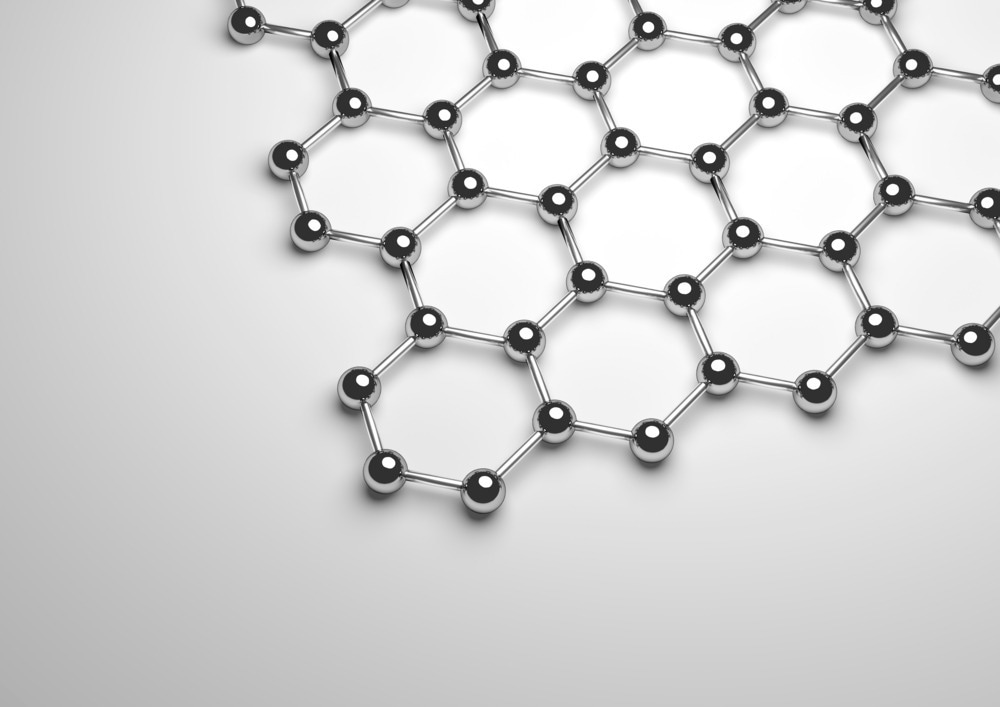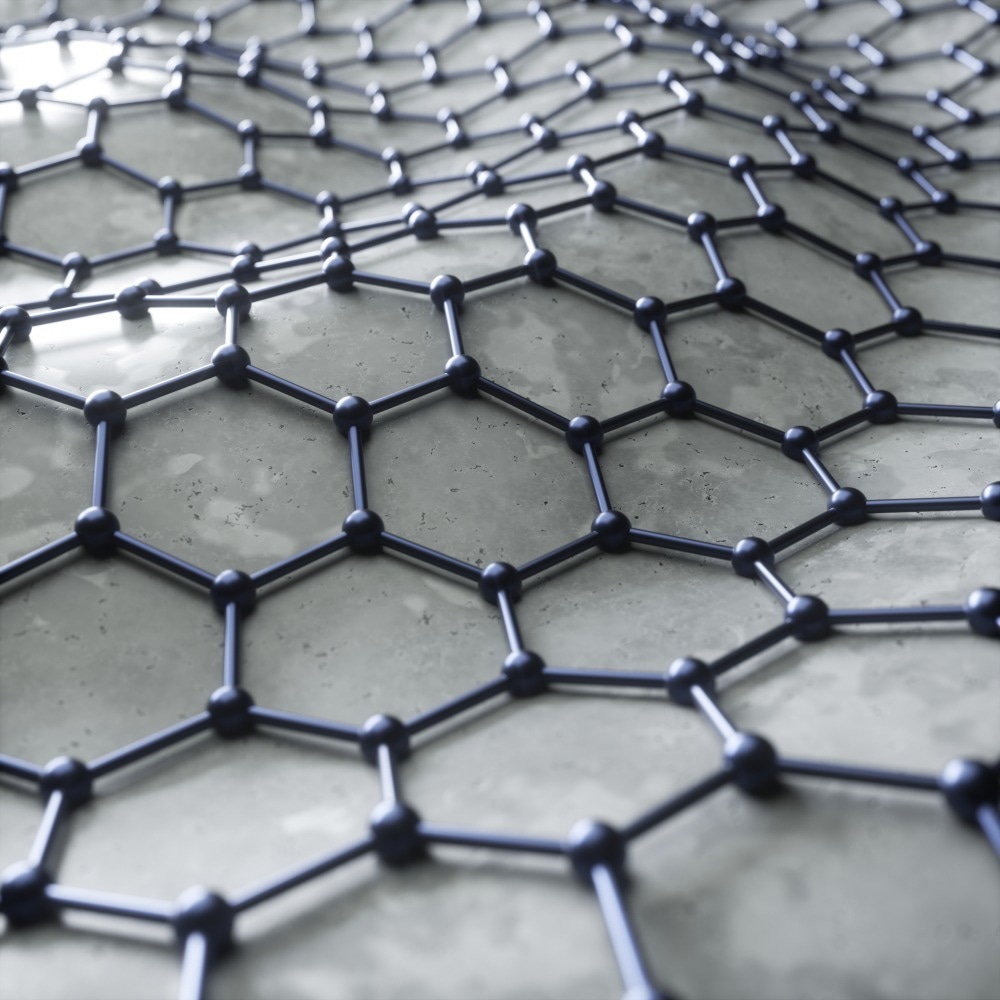In the last two decades, graphene has been used to address the world water crisis, prevent the spread of malaria, unlock new possibilities in the renewable energy sector, and more. Here, we focus on the work that is being done to solve the biggest problem in the concrete industry with the help of graphene. We highlight the recent advances in this sector and give an overview of what future developments to expect.

Image Credit: Forance/Shutterstock.com
Graphene is a remarkable material that was discovered in 2004 by Andre Geim and Konstantin Novoselov, for which the pair won the 2010 Nobel Prize in Physics. The material is formed of a single layer of carbon atoms, making it two-dimensional. A sheet of graphene is the thinnest material in the world, 1,000 times thinner than a human hair. It also has many more unique properties in addition to being razor-thin, such as high thermal and electrical conductivity, strength, flexibility, and resistance.
These properties have seen graphene already leveraged into numerous applications and have led to much hype around the material that is believed to have the promise to change the world.
The biggest problem facing the concrete industry
Concrete is a vital building material used around the world. Even in an era when people are looking for more sustainable and environmentally-friendly building options, concrete production is still increasing year-on-year. The major downside of this is that concrete production is a major contributor to greenhouse gas emissions. If the concrete production industry were a country, it would be the world’s third-largest greenhouse gas emitter.
Recently, a team of graphene specialists from Manchester University, England, together with alumni-led construction firm Nationwide Engineering, has developed a game-changing material - graphene-enhanced concrete. The team added small amounts of graphene to standard concrete, creating a new concrete with 30% more strength compared to the traditional product, meaning that less concrete is required to achieve the same structural performance.
Creating novel Concretene
Traditional concrete is poured as a liquid into the required shape and then set via the chemical reactions of hydration and gelation - this is where water and cement react to dry and form a hard paste that becomes harder with time.
The novel formulation adds graphene to the mix, which catalyzes the initial hydration reaction. This results in enhanced bonding at the micro-scale, producing a finished material that has enhanced strength, corrosion resistance, and durability. The team named their graphene-enhanced concrete ‘Concretene’.
Greener, cheaper concrete - how graphene can solve the building industry's sustainability problem
Video Credit: The University of Manchester – The home of graphene
Importantly, the material can be used in place of standard concrete, with no requirements for new equipment or up-skilling of construction workers.
The innovation has the potential to revolutionize the concrete industry by bringing down its carbon emissions by reducing the volume of material needed.
First commercial use of Concretene
In May 2021, the world’s first deployment of Concretene took place in Amesbury, UK, to create the foundations of a new gym. The world's first graphene-enhanced concrete slab will be closely monitored, to gather important information on the performance and the properties of the material in a real-life setting.
Environmental and performance benefits of Concretene
It is likely that Concretene will take off in building projects around the globe due to its numerous advantages. For example, it can reduce emissions by reducing the volume of concrete needed in a project by 30%, eliminating the need for steel reinforcement and reducing the cement content of concrete by half. Additionally, it performs better than traditional concrete in many ways, such as its improved early tensile shear capacity, rapid early compressive strength gain, reduced porosity and permeability, increased lifespan and reduced maintenance.
Future possibilities
Concretene will likely not be the only concrete product containing graphene available on the market. Much research has been conducted to show the value of producing concrete with graphene, which will likely lead to more commercial products emerging on the market.

Image Credit: OliveTree/Shutterstock.com
For example, a leading Graphene company, Australia-based First Graphene, has developed a number of graphene concrete additives to increase the strength of concrete as well as the longevity of buildings, while reducing the carbon footprint and cost of construction projects.
Studies have shown that First Graphene’s product PureGRAPH® graphene concrete additive is effective at increasing the compressive strength and the tensile strength of the resultant material.
It is likely that graphene concrete will become a common material used across a variety of global building projects. As the world moves to become more sustainable and meet global carbon emissions goals, all industries will be impacted, particularly those that contribute significantly to greenhouse gas emissions such as the construction industry. Due to its ability to reduce the carbon footprint of construction projects, it is probable that graphene concrete will be an important tool in helping the construction industry reduce its carbon footprint.
More from AZoBuild: Why Use Recycled CO2 in Fresh Concrete?
References and Further Reading
2021. Greener AND cheaper: Graphene@Manchester solves concrete's big problem [online]. The University of Manchester. Available from: https://www.manchester.ac.uk/discover/news/greener-and-cheaper-graphenemanchester-solves-concretes-big-problem/ (Last accessed December 2022)
Concretene [online]. Nationwide Engineering. Available from: https://nationwideengineering.co.uk/ (Last accessed December 2022)
First Graphene [online]. First Graphene. Available from: https://firstgraphene.net/ (Last accessed December 2022)
First Graphene launches new cement concrete additives [online]. AU Manufacturing. Available from: https://www.aumanufacturing.com.au/first-graphene-launches-new-cement-and-concrete-additives (Last accessed December 2022)
Shamsaei, E. et al. (2018) “Graphene-based nanosheets for stronger and more durable concrete: A Review,” Construction and Building Materials, 183, pp. 642–660. Available at: https://doi.org/10.1016/j.conbuildmat.2018.06.201
Disclaimer: The views expressed here are those of the author expressed in their private capacity and do not necessarily represent the views of AZoM.com Limited T/A AZoNetwork the owner and operator of this website. This disclaimer forms part of the Terms and conditions of use of this website.